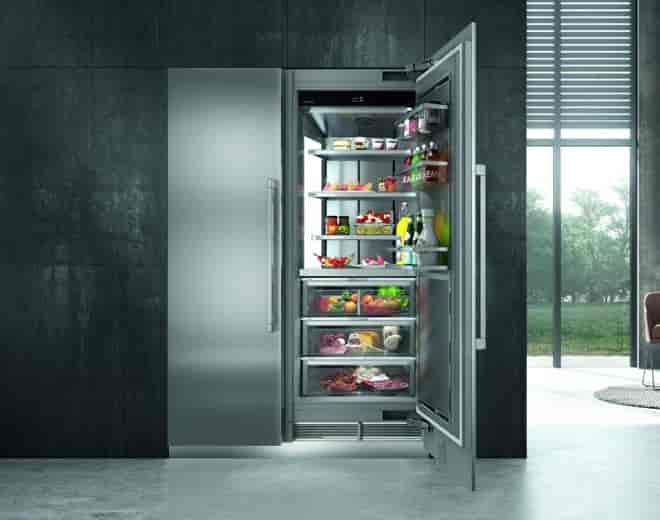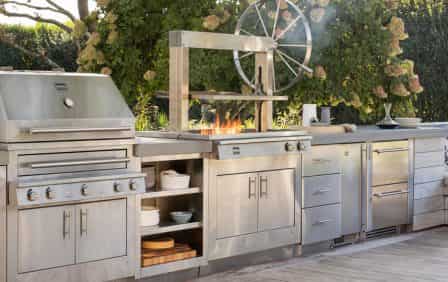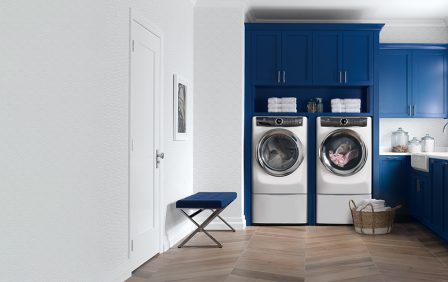Multi-Generational Living Trends in the Home
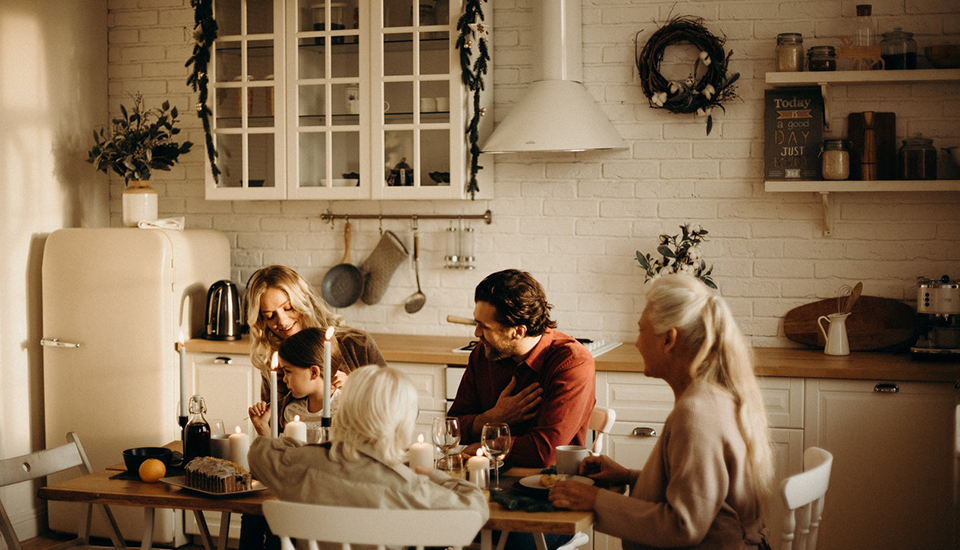
Multi-generational living has been a long-time reality for many families. For other families, however, it is a new normal. While multi-generational living was once only rooted in culture, it is now also a reaction to financial and health-based needs — among other circumstances.
Over time, the idea of the nuclear family has become defunct. The structure of multi-generational homes is wide-ranging, as these homes can include in-laws who live with their adult children and grandchildren or adult children who live with their parents.
There is no one-size-fits-all multi-generational living situation, as there are so many reasons and circumstances that may influence multiple generations to live together under one roof.
The increasing popularity of multiple generations living together in a single home has led to home trends that builders, interior designers, home appliance specialists, and homeowners are all considering when it comes to building, buying, designing, and renovating homes.
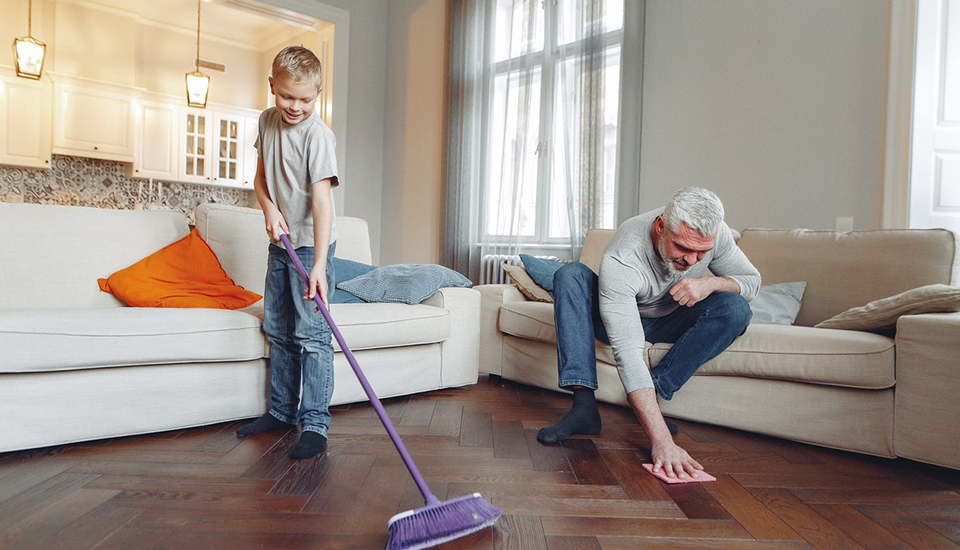
Why Multi-Generational Living?
The Housing Crisis
The rising cost of detached homes and the lack of real estate inventory in Canada (AKA “the housing crisis“) has influenced many families to come together under the same roof.
Exorbitant home expenses range from high property and maintenance fees to utility costs. Often, young adults and seniors merge their living situation due to one side or both being unable to afford these costs.
The two largest markets for multi-generational households are Toronto and Vancouver. Both cities have high proportions of immigrants, but they’re also Canada’s priciest housing markets where sharing expenses makes a lot of financial sense.
Aging Population
According to the Canadian Government, in 2014 alone, Canada was home to over 6 million people aged 65 or older. That’s 15.6 percent of Canada’s entire population.
As our ageing population increases, there is less space available in retirement homes, senior care facilities, senior-friendly apartments, and active living communities. This lack of space results in many seniors moving in with their families.
Research and trends suggest that, by 2030, Canada will be home to 9.5 million seniors. In other words, seniors will make up 23 percent of the Canadian population, and continue to contribute to the growing relevance of multi-generational living.
Cost Savings for Child Care & Adult Care:
Professional care services often come with a hefty bill that is not feasible for all families. Even when families can afford this care, it will never be as customized as the personal care that loved ones can provide.
The reality is that both senior and child-care facilities are pricey. Maintaining a home with multiple generations can help alleviate these financial pressures while ensuring the adequate care of family members.
Families can divide responsibilities and provide personalized care to support ageing parents or young children. Families will be able to rest easier knowing that their loved ones are surrounded by those who have their best interests at heart.
Boomerang Kids
Another common reason for multi-generational living is boomerang kids — children who leave home then return for a variety of reasons. These reasons may range from a need for financial support, a change in career, or a divorce or breakup.
Temporary Living Conditions
It is not uncommon for multi-general living to be a temporary situation for families. Families will typically live with one another for a few months or longer when waiting for a care facility to have available space or when waiting for a new home to be built.
Temporary multi-generational living is commonplace for families who are growing and expanding or have members transitioning into a new part of life.
Canada’s Changing Ethnocultural Composition
Canada is a melting pot that welcomes immigrants who may need to move in with family currently living in the country or maintain cultural traditions that involve multi-generational living.
Indigenous and immigrant families account for a growing share of Canada’s population and are more likely to live with their extended families.
According to Statistics Canada, in 2016, multi-generational households were most common in Nunavut (12.2%) and the Northwest Territories (4.3%), followed by Ontario (3.9%) and BC (3.6%).
Marriage Patterns
More people are getting married later in life due to career-based priorities and the general lack of pressure to get married at a young age — among other factors.
Back in 2016, Toronto Star reported that fewer Canadian couples were getting married. This trend has become increasingly more prevalent since then. In 2018, a poll by Angus Reid Institute revealed that 53 percent of Canadian adults felt marriage wasn’t necessary — that’s nearly half of all Canadians.
With people focusing on more career-based priorities and choosing to get married later in life, it is more and more common for young adults to stay living at home for extended periods.
Economic Hardship
The harsh reality is that the implications of the 2008 recession continue to impact us today, and the COVID-19 pandemic will also have lasting impacts on the economy.
These economic downfalls have made it harder to obtain and hold down jobs, especially those with pay rates that are conducive to the current costs attached to living (housing, food, hygienic products, toiletries, etc.)
Family Goals
More often, retired parents are selling their residences and moving into their children’s homes (usually in an in-law suite). This transition allows them to play a more significant role in their children’s and grandchildren’s lives.
Often, multi-generational living is an opportunity for seniors to move in with their children to spend more time with them and their grandchildren to create lasting memories.

What’s Trending in Wellness at Home?
Biophilic Design
Biophilic design (i.e. books and other physical educational resources) are at the heart of many healthy home trends. Designing a home with a library or books on wall shelves can help individuals establish deeper connections with their space.
Hygge Design
“Hygge” is a Scandinavian design style that comes from the Nordic regions and prioritizes comfort and functionality. As productivity at home becomes increasingly relevant, especially with remote work becoming more and more common, functional design that facilitates comfort and focus is essential.
Eco-friendly Design
The selection of sustainable products and organic materials is becoming the basis for a healthy design. A healthy design helps create a symbiotic relationship between the user and their environment that is comfortable and mutually beneficial.
Designing Human-Centric Homes
When it comes to home layouts, flexibility is key. There is no such thing as a “typical home” anymore, as a one-size-fits-all layout is no longer the norm. Layouts are now being more customized to suit the individual needs and lifestyles of families.
Encouraging Collaborative Living
Designs that alleviate social isolation and loneliness are becoming obsolete. More spaces are being designed to promote collaboration and togetherness, especially during this pandemic lockdown. Collaborative living with open spaces has become common among new moms, teenagers, single parents, single adults, the ageing population, people with disabilities, and retirees.
Re-purposing Space
More and more people are opting to revive forgotten rooms or repurpose their unused rooms. People are beginning to understand the value of maximizing space and the advantages of having designated areas for different activities.
Kitchen Wellness Makeover
Kitchens now acts as the engine of the home, rather than its heart. Consider doing a wellness makeover for your kitchen. Opt for non-toxic cabinetry and smaller cabinetry for easier access to fresh herbs and produce. The perfect example of this makeover is the Wellness Kitchen.
A good first step is to opt for formaldehyde-free cabinetry that has a low or zero-volatile-organic-compound (VOC) finish. You can also opt for flooring made from a healthy material like cork, FSC-certified wood, reclaimed wood, or linoleum.
Reassessing Floorplans
We are seeing more people reassess their floor plans to re-focus on zones in the home that support healthy habits. This includes digital detox spaces and improved sleeping areas to support circadian rhythm.
Find ways to integrate Zen spaces for relaxation through reading or study rooms, private spaces, or any other space that encourages healing and retreat in times of stress.
Advanced Technology
Advanced technology can help you stay connected, safe, and secure. Tech needs to be affordable, intuitive, and universal in design to integrate seamlessly into the home. This technology, ranging from smart assistance like Google Home and Amazon’s Alexa to smart gadgets like Nest, help manage temperature and indoor air quality and make a great addition to any space.
Outdoor Space
Design a peaceful outdoor space with premium outdoor appliances and carefully selected furniture pieces. Make your outdoor area a tranquil area that encourages relaxation and is always inviting for hosting friends, family, and loved ones.

How to Design for Wellness in Home
When optimizing your space for home wellness, consider working with design and appliance specialists to help you maximize your space for optimal comfort.
Tips for designing for wellness:
Layout Your Home for Optimal Indoor Air Quality
On average, Americans spend approximately 90% of their time indoors.
According to EPA studies, indoor air is generally 2 to 5 times more polluted than outdoor air. Optimize your indoor air quality with a built-in central air purifying system to eliminate airborne pollen and dust particles.
You can also eliminate invisible toxins in your home and maintain indoor air quality with proper ventilation, low VOC products, and hard flooring instead of carpet.
Integrate Easily Accessible Water Utilities
Water helps maintain the function of every system in the body, including the heart, brain, and muscles. It is essential to have easy access to water around your home.
Consider using touchless faucets with built-in water filters throughout the home to encourage hydration. A shower filtration system can also significantly reduce your exposure to chlorine and other harmful chemicals that can dry out and damage skin and hair.
You also want to be sure you are choosing laundry appliances that ensure efficient water usage that won’t drive up your energy use and, subsequently, your energy bills.
Consider Your Light Sources
Light suppresses the body’s natural production of melatonin, the natural hormone that affects how awake and alert we feel in the day, and how well we sleep at night.
Consider installing smart, adjustable colour temperature light bulbs throughout the home. This will help to improve energy, mood, and productivity, and even reinforce the body’s circadian rhythm. Circadian rhythm refers to the daily cycle that regulates several critical bodily functions, including the body’s production of melatonin.
Layout your home in a way that allows for natural light to flow in. Natural light is a mood and productivity booster that has positive impacts on our physical and mental health, as well as both the environment and our wallets.
Consider automatic solar-adaptive shades that adjust throughout the day in response to the changing position of the sun. This can help you to save energy and reduce glare.
Allocate Space for Fitness
Find space in your home where you can engage in regular physical activity. A dedicated work-out room will make it that much easier to exercise at home.
Daily exercise is essential for maintaining a healthy weight and reducing the risk of chronic disease, including heart disease, diabetes, many types of cancer, and musculoskeletal diseases such as arthritis or osteoporosis.
Explore new technologies that can help you exercise at home and consider options for storage to keep athletic gear.
Create Your Space with Comfort In Mind
Create an indoor environment that minimizes distractions and promotes productivity. Developing areas that promote peace and relaxation can help you be more calm, productive, and focused when you are working from home.
A great example of this type of space is a home library. Home studies and libraries filled with books help promote comfort and relaxation to maintain mental health and a sense of peace and wellness when you are at home.
Encourage Nourishment with Your Kitchen Layout
Design your kitchen with nourishment in mind. Your kitchen design can help encourage better eating habits by providing occupants with healthier food choices and behavioural cues. For example, you can create a dedicated juicing station with fresh fruits and vegetables on pull-out shelves to make better choices more easily accessible.
Your kitchen’s appliances, interior design, and overall functionality will directly impact your eating and cooking habits.
Consider integrating built-in appliances like single or double wall ovens to ensure that your kitchen has space for you to spread out and be comfortable. These space-saving appliances facilitate optimal functionality and give you room to create storage solutions for ingredients and kitchen tools.
It is also worth considering utilizing your outdoor space as gardens and outdoor cooking can help support exercise and healthy eating. If you don’t have outdoor space, consider joining a communal garden or community agriculture hub.
Design for Mindful Living
Caring for the mind is equally as important as caring for the body. Integrating “I deserve it” features in your home, such as an in-home massage room or yoga studio, is a great way to support mental and emotional health.
It is also essential to create a communicable space that encourages interaction between those sharing your home.
Homes with a strong indoor-outdoor connection, like a living room with doors that open up to a patio, can create a cozy atmosphere that promotes socialization.

The Role Comfort Plays in Achieving Wellness at Home
Comfort facilitates relaxation, which can help reduce an individual’s stress levels. This, in turn, can contribute to higher productivity levels and overall happiness.
Tips to add comfort into your home:
⦁ Have your space reflect you
There is no universal answer to mindful living because mindful living looks different for everyone. Your space should reflect you and your personal needs and preferences. When you design your space, consider what you and others living in your space will specifically need to ensure comfort, functionality, and productivity.
⦁ Incorporate nature into your home
Bring the outside indoors. Integrating greenery into your home is a great way to create a fresh and earthy atmosphere, as many plants can help improve your indoor air quality. If you suffer from allergies, consider getting fake plants — just be sure to dust these plants frequently to prevent dust build-up.
⦁ Control the climate
Whether you use appliances for your home like air conditioning units or open up your windows and doors to encourage air circulation, be sure to take the steps needed to control your climate.
If your indoor air is too frigid or humid, it can have detrimental effects on your productivity, health, and your home’s structural integrity. Humidity, for example, can cause moisture and dampness. This often leads to water damage and build-up of bacteria like mould spores.
⦁ Include a retreat space
Everyone needs a place in their home that they can retreat to for peace and serenity. Relaxation and comfort are essential for living in place, and everyone is entitled to a space where they can reflect and unwind.
⦁ Ensure you have flexible spaces
Your space should be multifunctional, especially if your home is accommodating a sizable family. Have flexible spaces that can double as a living room, an office space, or whatever else you may need it to be.
⦁ Create storage that works for your lifestyle
It is essential to have storage space in your home so that you can avoid creating clutter and experiencing its associated physical and mental health implications.
Create storage space in your home that works for you. This may mean incorporating built-in appliances, or furniture with built-in storage, or possibly opting for smaller appliances to maximize your space better.


